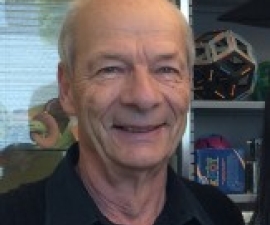

Research Expertise and Interest
computer graphics, computer-aided design, solid modeling, rapid prototyping
Research Description
Professor Séquin joined the faculty in the EECS Department at Berkeley in 1977. He started out by teaching courses on the subject of very large-scale integrated (VLSI) circuits, thereby trying to build a bridge between the CS division and the EE faculty. In the early 1980's, jointly with D. Patterson he introduced the `RISC' concept to the world of microcomputers. He was head of the Computer Science Division from 1980 till 1983. Since then he has concentrated on computer graphics, geometric modeling, and on the development of computer aided design (CAD) tools for circuit designers, architects, and for mechanical engineers. During the 1990s he has collaborated with P. Wright in Mechanical Engineering on the CyberCut/CyberBuild project with the goal to streamline the path from creative design to rapid prototyping. Since 2000, he has primarily concentrated on the connections between mathematics and the arts. Since 1998, he has been on the board of directors for the annual Bridges Conference, devoted to highlighting the mathematical structures in art, music, architecture, education, and culture.
On a personal level, he pursues the interaction between art and mathematics in both directions. Abstract geometrical artwork by artists such as Brent Collins and Charles O. Perry have prompted him to discover the underlying mathematical principles and to capture them in computer programs, which can then produce more sculptures of the same kind, but with enhanced complexity. Conversely, Séquin often starts with visualization models to explain a mathematical concept, such as the various topologies of Klein bottles or the eversion of 2-manifold surfaces of higher genus. He then tries to make such models as aesthetically pleasing as possible and to turn them into sculptural models in their own right, that will fascinate even spectators who are not aware of the underlying mathematics. He has been a regular contributor to the annual math-art exhibitions associated with the Bridges conferences and with the annual Joint Mathematics Meetings.
Research Interests:
Geometric modeling; computer graphics; computer aided design tools for VLSI, mechanical systems, abstract sculptures, and architecture; human-computer interaction; mathematical visualizations. 3D-printing and rapid prototyping.